Wavelength 370–900 nm | Altitude 960 m (3,150 ft) Diameter 4 m | |
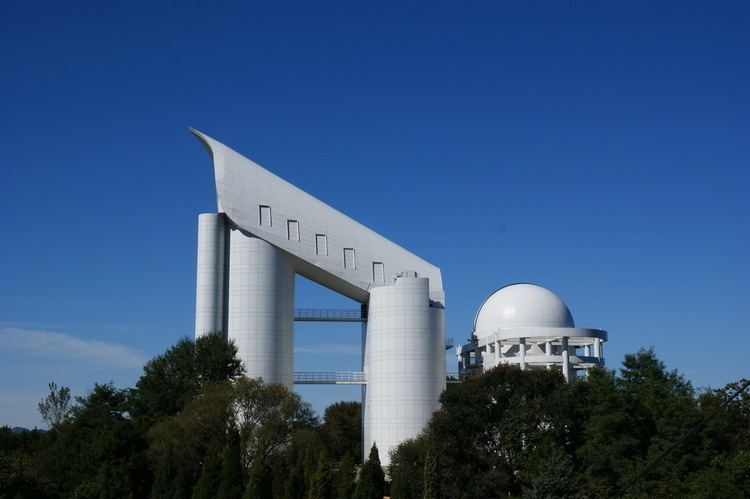 | ||
Built September 2001 (2001-09)–October 2008 (2008-10)[1] Telescope style Schmidt telescope with reflective corrector | ||
Chinese optical telescope lamost
The Large Sky Area Multi-Object Fibre Spectroscopic Telescope (LAMOST), also known as the Guo Shoujing Telescope after the 13th-century Chinese astronomer, is a meridian reflecting Schmidt telescope, located in Xinglong Station, Hebei Province, China. Undertaken by the Chinese Academy of Science, the telescope is planned to conduct a 5-year spectroscopic survey of 10 million Milky Way stars, as well as millions of galaxies. The project’s budget is RMB 235 million yuan.
Contents
- Chinese optical telescope lamost
- Corot3 kasc7 32 p de cat lamost observations in the kepler field
- Optics
- Scientific goals
- Early results
- References

Corot3 kasc7 32 p de cat lamost observations in the kepler field
Optics
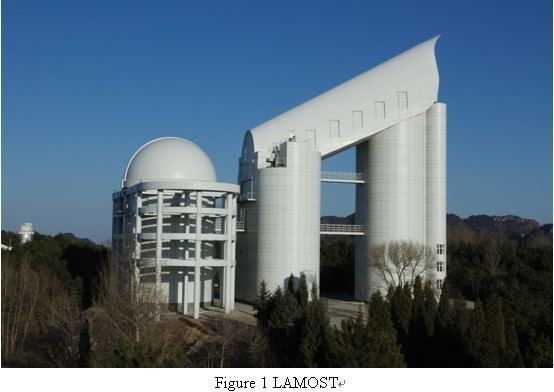
LAMOST is configured as a reflective Schmidt telescope with adaptive optics. There are two mirrors, each made up of a number of 1.1-metre (p-p) hexagonal deformable segments. The first mirror, MA (24 segments, fitting in a 5.72×4.4 m rectangle) is a Schmidt corrector plate in a dome at ground level. The almost-flat mirror MA reflects the light to the south, up a large slanted tunnel (25° above horizontal) to the larger spherical focusing mirror MB (37 segments, fitting in a 6.67×6.09 m rectangle). This directs light to a focal plane 1.75 metres in diameter corresponding to a five-degree field of view. The focal plane is tiled with 4000 fibre-positioning units, each feeding an optical fibre which transfers light to one of sixteen 250-channel spectrographs below.
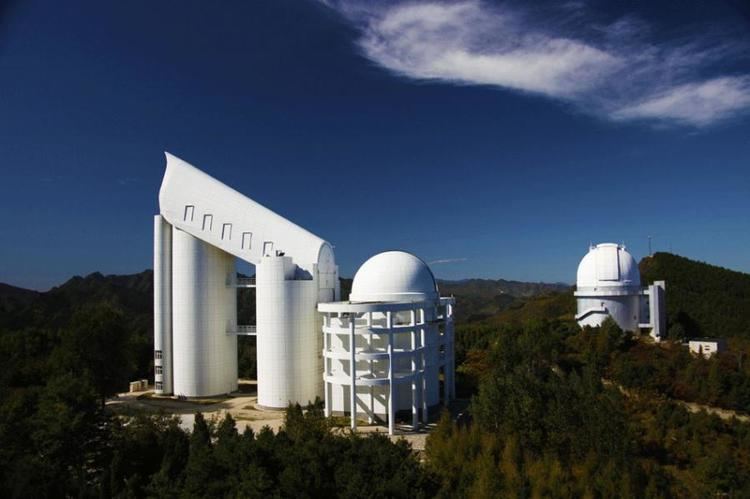
Looking at the image opposite, MB is at the top of the left-hand supporting column of the tower, MA is in the left of the two domes at the right of the image (the rightmost, grey dome is an unrelated telescope), and the spectrographs are inside the right-hand column of the tower.
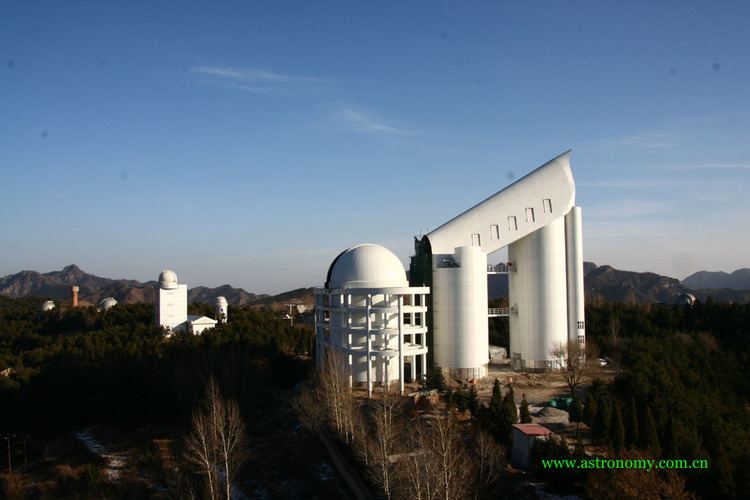
Each spectrograph has two 4k×4k CCD cameras, using e2v CCD chips, with 'blue' (370–590 nm) and 'red' (570–900 nm) sides; the telescope can also be used in a higher spectral resolution mode where the range is 510–540 and 830–890 nm.
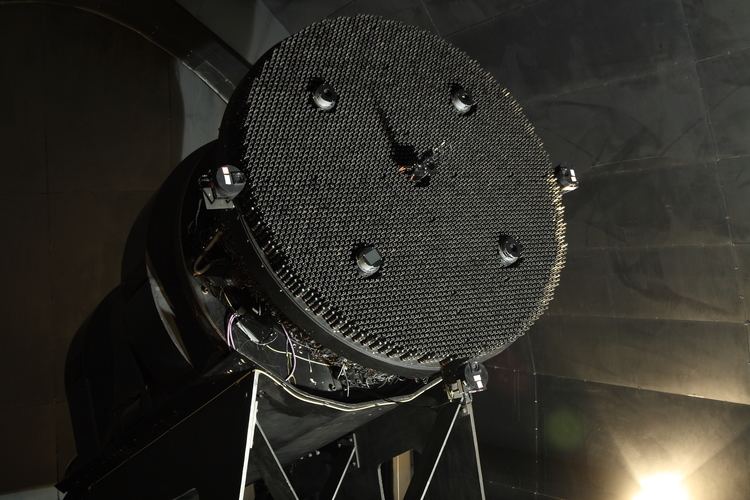
Using active optics technique to control its reflecting corrector makes it a unique astronomical instrument in combining large aperture with wide field of view. The available large focal plane may accommodate up to thousands of fibers, by which the collected light of distant and faint celestial objects down to 20.5 magnitude is fed into the spectrographs, promising a very high spectrum acquiring rate of ten-thousands of spectra per night.
Scientific goals
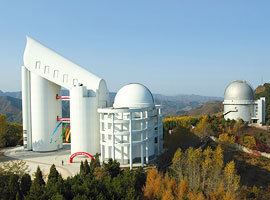
The telescope is to conduct a wide-field survey, called the "LAMOST Experiment for Galactic Understanding and Evolution," or LEGUE. Particular scientific goals of the LAMOST include:
It is also hoped that the vast volume of data produced will lead to additional serendipitous discoveries. Early commissioning observations have been able to confirm spectroscopically a new method of identifying quasars based on their infrared color. An overarching goal of the telescope is to bring Chinese astronomy into the 21st century, taking a leading role in wide-field spectroscopy and in the fields of large-scale and large-sample astronomy and astrophysics.
Early results
A 2011 conference presentation suggests that there was initially a problem with accuracy of the fibre positioners causing poor throughput, but that this was rectified by adding another calibration step.
